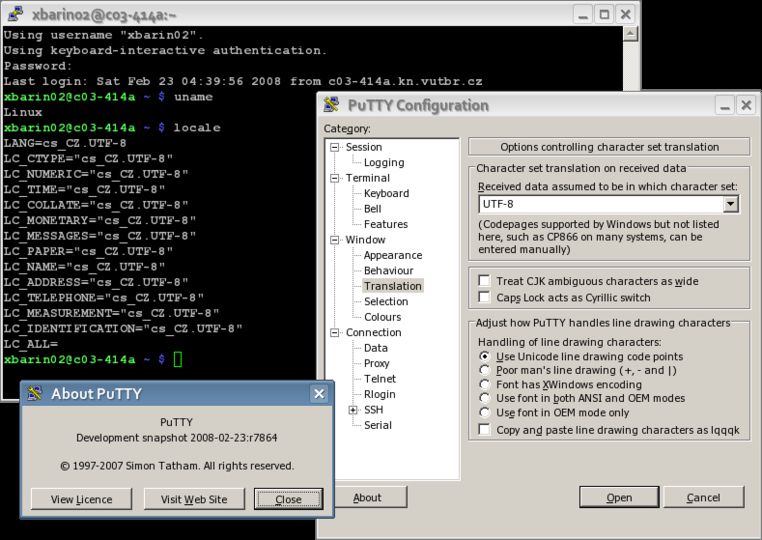

Click Accept if you're confident of the identity of the remote system. It's verifying the destination server is the device you believe it is. The first time you establish a connection, you will receive a PuTTY Security Alert informing you the remote server's host key is not cached. A new window will open and display your SSH session. The remote Linux system will prompt you for the name and password of a local user account.

Ensure SSH is selected from the Connection type radio options. Launch PuTTY on a Windows workstation and type the destination IP address in the HOST Name (or IP address) box. For example, root is allowed over SSH, the firewall permits TCP port 22, default password-based authentication is set, etc. How to use PuTTY for a basic connectionĪssume the targeted Linux system is configured for inbound SSH connections with no special settings. Once complete, you can view the README file for basic guidance or exit.
If the Windows User Account Control asks to allow the app to make changes on your computer, select Yes. On the Products Features page, browse and select any additional nondefault options if desired. When the file has downloaded, double-click on the MSI package to launch the installer. Run the installer when the download completes.ĭouble-click the installer to run the program. Downloadable clients that support a single protocol, such as Telnet, SCP and SFTP, are also available. The general PuTTY installation includes all protocol client types. Supported Windows systems include 64-bit x86, 64-bit Arm and 32-bit x86. Select the appropriate package file and download the installation executable. Managing multiple SSH profiles is also simpler in PuTTY, as are other customizations, such as selecting encryption keys. PuTTY remains a viable alternative to OpenSSH today because its GUI interface may be easier for admins to customize. Initially released in 1999, PuTTY grew in popularity because Windows did not include the OpenSSH command line client and server until Windows 10 and later. PuTTY is an open source GUI implementation of the Secure Shell protocol that has long been used to run secure SSH tunnels to and from Windows computers. Configure routing protocols remotely using SSH. Connect to network devices, such as routers and managed switches to do the following:. Update software using DNF (Dandified Yum) or APT (Advanced Package Tool). 
Sysadmins use SSH to connect to remote devices and do the following: Many Linux servers and network devices accept inbound SSH connections for remote configuration. SSH is a networking protocol that enables secure access to a computer or device over an unsecure network. PuTTY is one tool that can help with this.







 0 kommentar(er)
0 kommentar(er)
